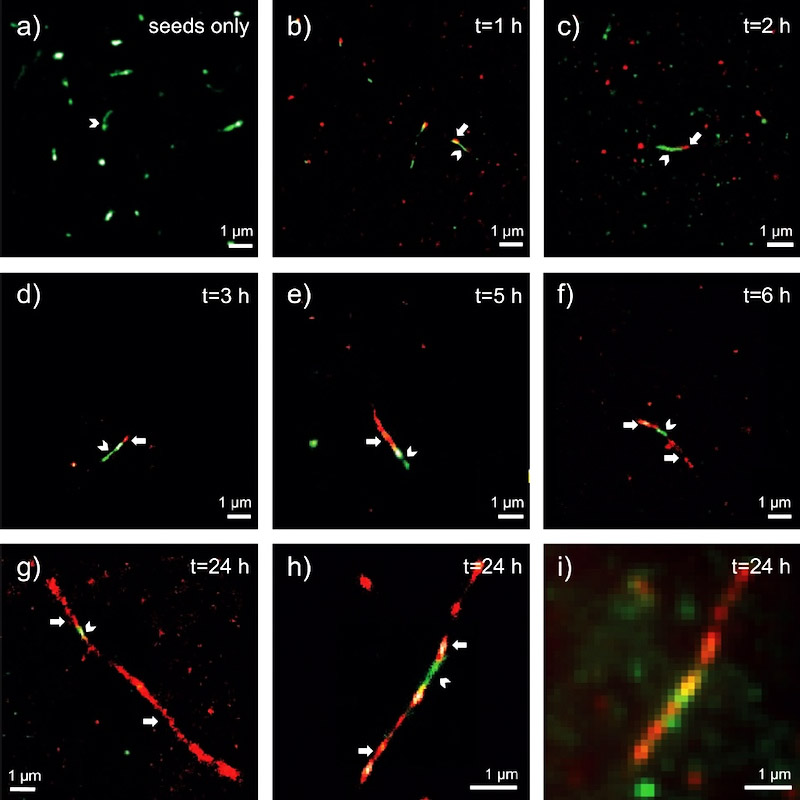Direct Observation of Heterogeneous Amyloid Fibril Growth Kinetics via Two-Color Super-Resolution Microscopy, Pinotsi D, Büll AK, Galvagnion C, Dobson CM, Kaminski-Schierle GS, Kaminski CF, Nano Letters (2013), 14 (1), pp
339–345 DOI: 10.1021/nl4041093 |
Abstract
The self-assembly of normally soluble proteins into fibrillar amyloid structures is associated with a range of neurodegenerative disorders, such as Parkinson's and Alzheimer's diseases. In the present study we show that specific events in the kinetics of the complex, multi-step aggregation process of one such protein, α-synuclein, whose aggregation is a characteristic hallmark of Parkinson's disease, can be followed at the molecular level using optical super-resolution microscopy. We have explored in particular the elongation of preformed α-synuclein fibrils; using two-color single-molecule localization microscopy we are able to provide conclusive evidence that the elongation proceeds from both ends of the fibril seeds. Furthermore, the technique reveals a large heterogeneity in the growth rates of individual fibrils; some fibrils exhibit no detectable growth, whereas others extend to more than ten times their original length within hours. These large variations in the growth kinetics can be attributed to fibril structural polymorphism. Our technique offers new capabilities in the study of amyloid growth dynamics at the molecular level and is readily translated to the study of the self-assembly of other nanostructures. Keywords: two-color super-resolution microscopy, aggregation kinetics, α-synuclein, fibril self-assembly, fibril polymorphisms

Two-color dSTORM images reveal details of the elongation of α-synuclein fibrils through addition of soluble protein molecules, in vitro.
(a) The initial sample consists of α-synuclein seed fibrils at 8 μM concentration, labeled with AF568 (green). At t = 0 h, monomeric α-synuclein at a total concentration of 80 μM (76 μM wild type, 4 μM AF647-labeled N122C) (red) was added to the solution. (b−h) Aliquots were taken during the aggregation reaction and imaged with two-color dSTORM. The images show the overlay of the two channels (green, AF568 and red, AF647). The time points after the initiation of aggregation are (b) t = 1 h, (c) t = 2 h, (d) t = 3 h, (e) t = 5 h, (f) t = 6 h, and (g,h) t = 24 h. Each fibril consists of the initial seed (green, indicated by an arrowhead) and the extended region formed through addition of monomeric protein (red, indicated by an arrow). The lengths of the fibrils reach several micrometers with the initial seed fibril being extended from both ends. (h) Two-color dSTORM image of a fibril at t = 24 h and (i) conventional fluorescence image in TIRF of the same fibril as in (h), showing that the increase in resolution
achieved by dSTORM enables the original and the newly formed section of the fibril to be clearly distinguished.
